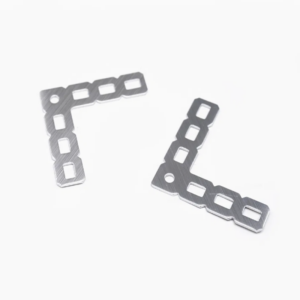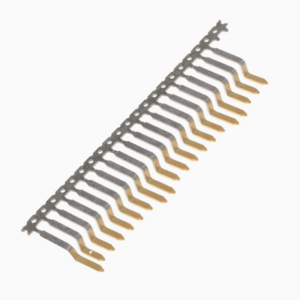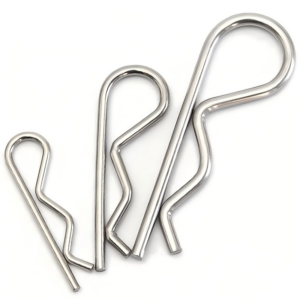Secondary Service
Main Processes Used for the Deburring and Finishing of Metal Parts
Deburring is the process of chamfering or rounding sharp corners formed on a metallic part during the machining process. Deburring can also remove the raised edges and small pieces of material that may remain attached to a workpiece after it has been machined by a cutting tool or grinding wheel. Finishing processes alter the surfaces of a workpiece to remove machining marks, scaling or pitting. Finishing can also enhance the appearance or function of the part and prepare it for subsequent coating processes such as bonding, plating, or painting. Deburring and finishing are important process steps that should not be overlooked by the engineers and technicians designing and manufacturing component parts.
Hand Grinding, Sanding, Lapping and Polishing
Manual processing of parts is still commonplace in today’s modern manufacturing facilities. Many parts that are machined on sophisticated CNC equipment are still deburred and finished using an array of hand, ultrasonic and air powered tools. Files, stones, knives, abrasive sheets/compounds, and specialized deburring tools are utilized by the machinist or tool maker to complete the fabrication process based on the part’s geometry and the requirements communicated by the engineering drawing. Tedious and time-consuming hand work can add significant cost to a part; therefore if many identical parts are being produced, an automated deburring and finishing process is usually specified if possible.
ULTRA-FINE CLEANING
Our versatile and effective fleet of machinery enables us to execute cleaning procedures to the highest standards. Whether it's water-based or solvent-based cleaning, we possess a range of cutting-edge technologies that enable us to achieve the precise level of cleanliness required by our clients:
On-the-line cleaning and degreasing of stamped and drawn parts
Bulk cleaning of stamped and drawn parts
Professional cleaning services for steel and stainless steel stamped parts
Conducting attenuation analyses
Particle analyses, including metallic and non-metallic particles
Assessment of particle classes according to VDA Volume 19
Mass Finishing
Mass Finishing is a timed batch process that utilizes abrasive media and a rotating or vibrating process vessel to deburr and finish multiple machined parts simultaneously. These machines process any surface that comes in contact with the media. Ranging in size from small tabletop units used for processing rings and other jewelry to massive rectangular tub machines twenty feet long used for finishing aluminum aircraft parts. The processing vessels are generally fitted with a tough rubber liner to protect them from the media and prevent damage to the parts being processed. There are countless combinations of media sizes, shapes and materials which are selected based on the machined part’s physical characteristics and how much material needs to be removed to achieve the desired surface finish.
Roller and Ball Burnishing
The process of burnishing is the plastic deformation of a surface due to sliding contact with another object. There are many burnishing processes utilized by manufacturers today, however, the most common are roller burnishing and ball burnishing. Burnishing does not remove any material, it is a small-scale forming operation that can improve the finish or hardness of the part’s surface.
Powered Brush, Belt and Disc Deburring and Finishing
We employ various brushing methods to eliminate burrs and flakes from stamped strips, including simultaneous cleaning and drying of stainless steel strips on the production line. This ensures compliance with stringent particle requirements, such as those outlined in VDA Volume 19, even for intricate parts like injectors or medical equipment. Our machines, ranging in size and design, utilize rotating abrasive discs, brushes, and drums to process parts, especially suited for sheet or plate materials transported on flat belt conveyors. Some machines create directional scratch marks, known as grain, on flat sheet metal, while robotic workcells equipped with compliant power tools and abrasive media efficiently deburr corners and finish surfaces.
Abrasive Blasting
We utilize blasting with various mediums as an additional method to eliminate stamping burrs and flakes on individual parts. Glass beads, in addition to corundum, are chosen for their suitability with intricate geometries. This method enables us to meet stringent particle requirements for sophisticated stamped parts while also enhancing surface quality and resistance to vibration stresses. Blasting involves accelerating solid abrasive particles, typically with compressed air, to impact the part's surface at high speed. Different media materials, sizes, and shapes can be utilized depending on the base metal hardness and desired surface effect. Enclosed cabinets are commonly used for processing smaller parts, containing dust and protecting operators. Robotic blasting systems and multi-nozzle machines automate the process, ensuring consistency and efficient material removal rates.
Electrochemical Deburring and Polishing
This is a method that finishes a machined part’s surfaces by means of anodic metal dissolution. A part specific shaped tool is the cathode. In conjunction with an electrolyte fluid, an anodic reaction is created between the tool and the part that removes surface material in a very precise manner.
THERMAL AGING
We utilize combustion gas ignition within a pressurized chamber to swiftly eliminate burrs from machined components. The small size of the burrs allows them to reach auto-ignition instantly, vaporizing in the oxygen-rich environment. Residual oxide powder may require cleaning before or during subsequent coating processes. Accelerated thermal aging replicates product lifetime in rapidly changing temperatures, verifying product quality under extreme conditions. Plastic parts undergo alternating cycles of exposure to specified temperatures ranging from -70°C to +180°C
Abrasive Flow Polishing and Deburring
The abrasive flow process uses the reciprocal flow of abrasive laden slurry to polish and deburr the surfaces and edges of a machined part. Two vertically opposed cylinders pump the slurry back and forth through passages formed by the workpiece and special part specific tooling. This process is typically used to deburr and polish parts with complex internal features.
Plasma Surface Treatment
Plasma, the fourth state of matter, is a gas that’s been partially ionized and has been electrically charged with freely moving electrons in both the negative and positive state. Plasma flames can be used for pretreating surfaces of metallic parts prior to subsequent coating, printing or bonding operations. The plasma removes any foreign contaminants present on the surface of a material and also activates the surface at a molecular level significantly improving the adhesion characteristics of the base material.
Metal Surface Protection Processes
- Passivation - This cleaning and conditioning process for stainless steel is used to prevent corrosion.
- Cadmium Plating - Cadmium plating is a unique combination of corrosion resistance, solder ability, and antistatic characteristics. It is commonly used in aerospace applications. It may be clear, yellow, black or olive drab.
- Powder Coating - With exceptional durability and environmentally-friendly characteristics, powder coating is the preferred alternative to painting.
- Anodize - Anodize produces a uniform and much harder than natural oxidation which will not flake off like paint.
- Aluminum may be dyed to receive a colored finish at the end of the anodizing process.
- Tin Plating -Tin Plating is used in the food industry. It is also used in the electronics industry for its solder ability.
- Zinc Plating - This process is used to prevent oxidation and corrosion of the base material, protecting it and extending its working life.
- Chrome Plating - While used primarily as a decorative finish, chrome plating also reduces friction.
- Gold and Silver Plating - Gold and Silver plating are ideal for ornamental purposes. It is also used in electronics due to its resistance to corrosion.
- Black Oxide - This is an excellent choice for indoor corrosion protection on products with oil or wax finishes.
- Anneal - Anneal is a baking process that decreases the temper of the material.
- Heat Treat/Age - Heat Treat / Age is a baking process that increases the temper of the material.



